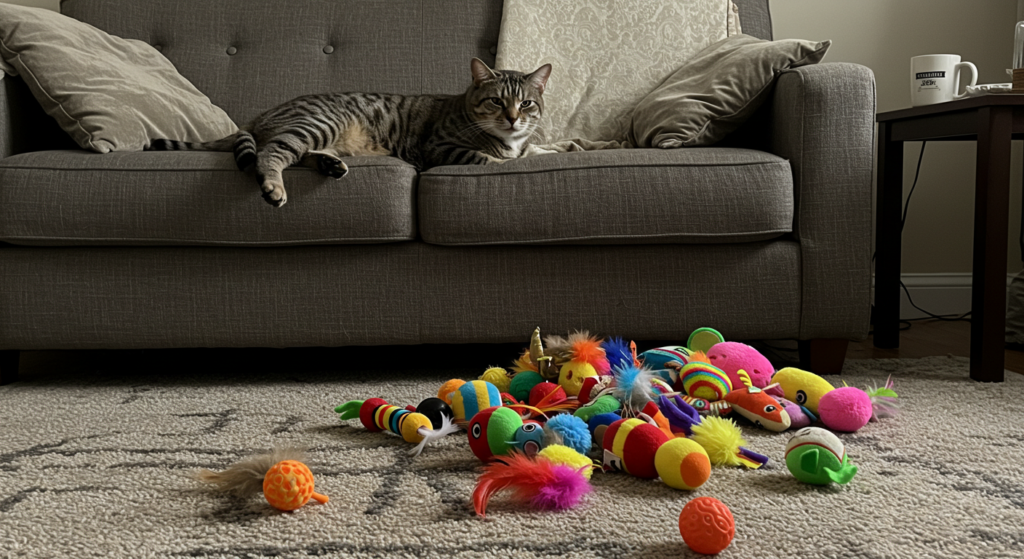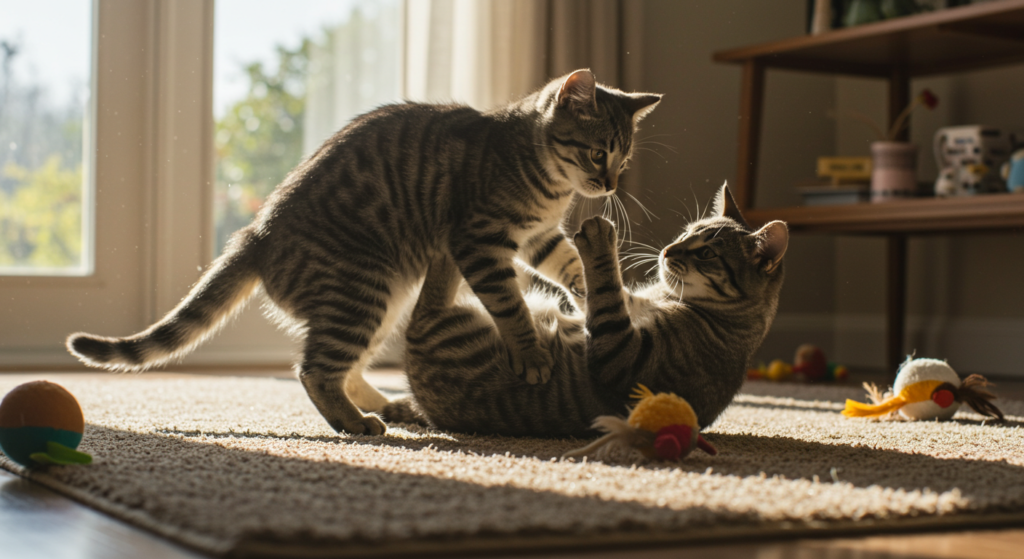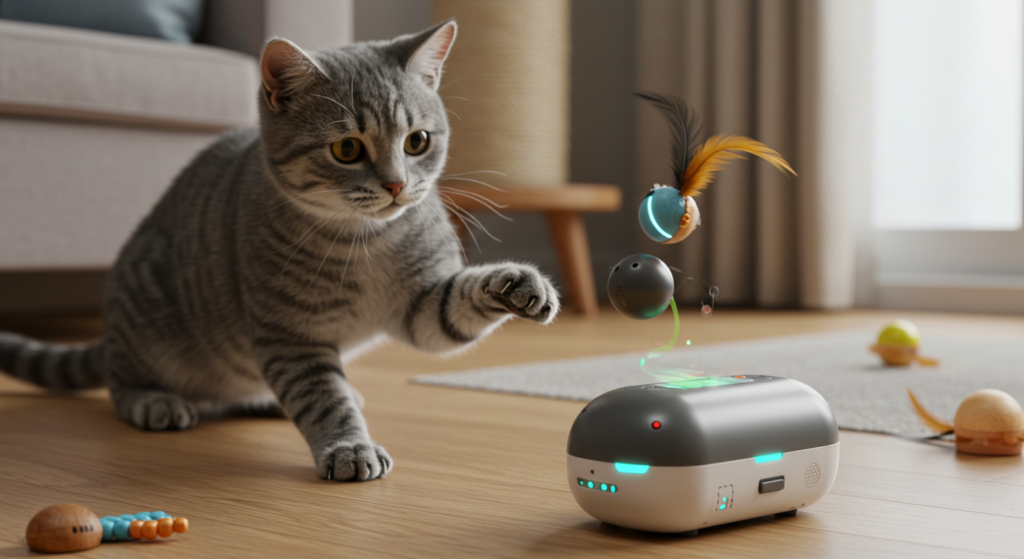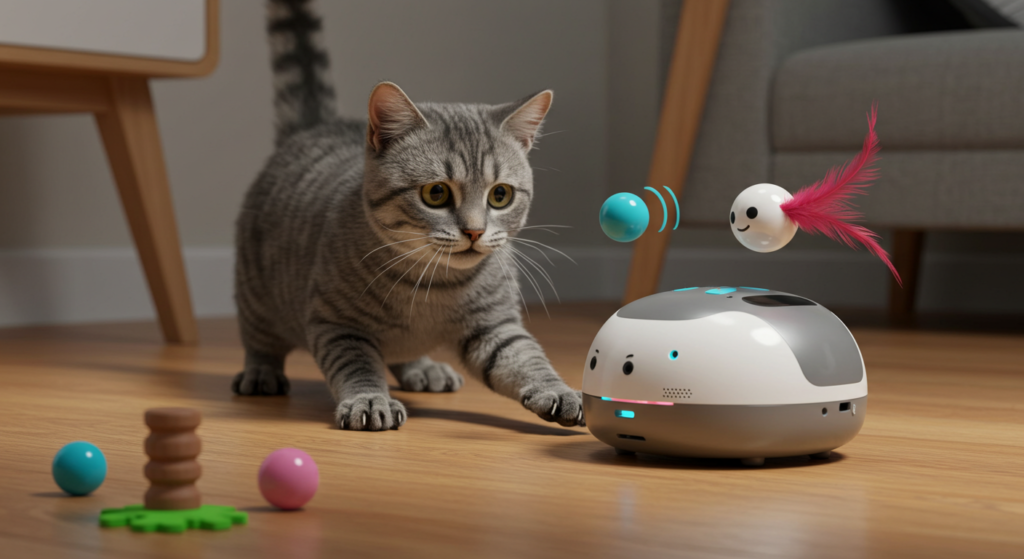Let’s get real here: cats are the epitome of chill. They sleep in sunbeams, sprawl across your keyboard, and seemingly seem to know everything. But the thing is—your cat is not an adorable little couch potato. They’re a wild animal on the inside. And if they don’t get to play, let’s just say your curtains will not be standing.
So, exactly how much playtime does your cat really need? The answer will surprise you nicely. Let’s simplify it for you (and won’t turn you into a bad cat parent).
Why Playtime Matters So Much to Cats.
Now, why do we need playtime, you ask? Cats are not playing for pleasure—far from it. They are rehearsing their hunting. Feral cats will stalk, pounce, and chase game for hours. Domestic cats have no such release, so playtime is when they get to let it rip.

If they don’t get enough play, they become bored, stressed, or depressed. And trust me, a bored cat is a destructive cat. They might start scratching your furniture, knocking things off the shelves, or waking you up at 3 a.m. for no reason. Playtime is not a luxury, it’s a necessity.
How Much Playtime Does Your Cat Need?
Bad news: your cat needs a minimum of 30 to 60 minutes of playtime every day.

Wait, what? An hour? Don’t worry, I’ll explain. This does not require that you spend one whole hour flailing a feather wand about. You can do it in small sessions throughout the day. Cats are sprinters, not marathon runners, so they’re designed for short, high-energy bursts of exercise with plenty of resting in between.
Here’s a simple rundown:
– Morning: 10-15 minutes of play to start their day.
– Afternoon: Another 10-15 minutes to relieve the tedium.
– Evening: 20-30 minutes of playtime to exhaust them prior to bed.
This regime replicates their natural hunting pattern and keeps them fit and cheerful.
What is Considered Playtime?

Not all play is equal. Your cat must play at things that work their mind and body. Here are a few suggestions:
– Interactive Toys: Feather wands, laser pointers, or toys on a string are ideal to mimic prey.
– Puzzle Toys: These make your cat earn their treats, keeping them busy.
– Chase Games: Toss a ball or wadded paper for them to chase.
– Hide-and-Seek: Make them “hunt” you around the house (they will enjoy it).
The key is to make it fun and random. Cats get bored very fast, so rotate the toys and games regularly.
What If Your Cat Doesn’t See Enough Play?
If your cat’s not receiving playtime, you’ll likely see some not-so-nice things:
– Destruction: Breaking furniture, knocking items over, or tearing your drapes.
– Attention-Seeking: This includes incessant meowing, pawing, or waking you up at night.
– Weight Gain: Cats will get overweight if they do not exercise, and this leads to ailments.
– Stress: Boredom can stress out or even turn cats aggressive.
The silver lining? All of these issues can be addressed with a little more play.
Tips for Busy Cat Parents
I know—life gets in the way. With work, chores, and the rest, there are times it seems impossible to find an hour in the day to play with your cat. But the catch is, you don’t have to do all of this by yourself.
– Swap Toys: Store some toys all the time and change them once a week in order to avoid boredom.

– Automate Play: Spend on battery-powered toys that operate independently.
– Call on Assistance: If you live with roommates or family, include them in your playtime.
– Quality Over Quantity: 10 minutes of concentrated, stimulating play can make a big impact.
The Bottom Line
Your cat isn’t a mere adorable little loaf—they’re a little predator with a large energy budget. Playtime isn’t a matter of keeping them entertained; it’s a matter of keeping them healthy, happy, and out of mischief. So, grab that feather wand, get out the laser pointer, and get ready to unleash your cat’s inner huntress. Your couch (and your sanity) will thank you. What’s your cat’s favorite play type? Share your stories in the comments below–I’d love to hear!

